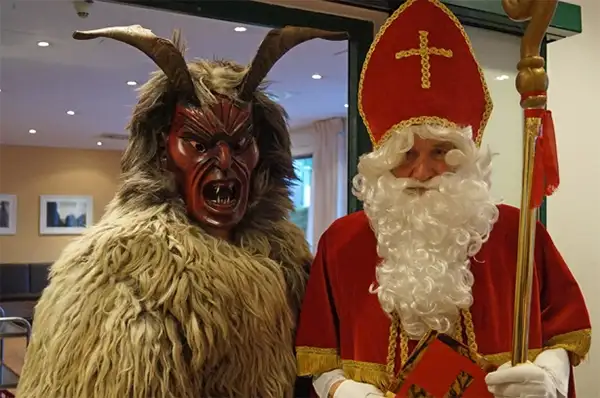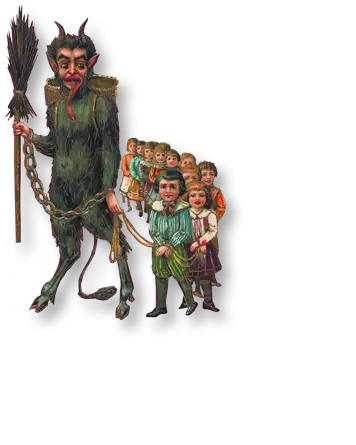The Legend of the Generous Saint
Saint Nicholas Day, observed annually on December 6th, honors a figure whose legacy transcends time and borders. This day celebrates Saint Nicholas of Myra, a 4th-century saint revered for his saintly piety and extraordinary acts of secret benevolence. Born in Patara, a town in ancient Lycia, now part of modern-day Turkey, Saint Nicholas carved a niche for himself as the archetypal secret benefactor in the annals of history. He was the enigmatic figure who would become the inspiration for the globally beloved Santa Claus.
Tales of quiet, compassionate acts marked Nicholas' life. He was known for discreetly leaving gifts for those in need, which added an air of mystery to his persona. Imagine a stealthy figure in the dead of night, delivering hope and joy through gold coins or life-saving aid. Unlike the modern depiction of Santa Claus with his vibrant red suit and boisterous "Ho Ho Ho," Saint Nicholas operated under the cover of anonymity, preferring humility over recognition. His acts of kindness were not just gestures; they became the stuff of legend, creating a tapestry of stories that would be passed down through generations.
Saint Nicholas' generosity knew no bounds, transcending the mere material. He was a beacon of hope to the downtrodden, a protector of the innocent, and a guardian of the sailors. His life was a testament to the power of quiet generosity and selfless service, setting the stage for a tradition that would capture the imagination and hearts of people worldwide.
Through Saint Nicholas Day, we celebrate not just a saint but an ideal—the joy of giving, the beauty of anonymity in charity, and the enduring impact of one man's compassionate deeds. It is a day that reminds us of the humble beginnings of the now-iconic Santa Claus and invites us to reflect on the profound simplicity and depth of Saint Nicholas' legacy.
Shoes at the Ready!
December 6th sparks a peculiar yet charming ritual among children in numerous corners of Europe - the art of shoe placement. Here's the lowdown: kids embark on a covert mission to clean and polish their footwear to an almost mirror-like shine. Why? To impress none other than Saint Nicholas, of course! The aim is to place these gleaming shoes at their doorsteps or windowsills, creating a makeshift landing pad for Saint Nicholas' much-anticipated nocturnal visit.
But this isn't just about shoe fashion. Oh no, it's a high-stakes game where the reward is a delightful bounty of sweets and toys. Picture the scene: children, barely able to sleep, dreaming of the wonders they might find nestled in their shoes the next morning. It's a magical mix of anticipation and excitement with a dash of old-world charm.
Now, let's talk about the flip side. For those little rascals who've been more naughty than nice, Saint Nicholas has a humorous way of saying, "Better luck next year, kiddo." Instead of chocolates or miniature toys, these children might find their shoes graced with a harmless twig or, for dramatic effect, a lump of coal. It's Saint Nicholas' light-hearted nudge—a reminder that he's got his eye on everyone, and good behavior is the ticket to his good list.
This shoe tradition isn't just a quirky ritual; it's a blend of cultural heritage, childhood innocence, and a touch of domestic housekeeping (because, let's face it, getting kids to polish their shoes is no small feat). It's a delightful practice that brings families together, sparks conversations, and creates memories that last a lifetime.
So, as Saint Nicholas Day approaches, European homes witness a curious spectacle: rows of shiny shoes, expectantly lined up, silently speaking of the hopes and giggles of their young owners. Whether brimming with goodies or hosting a symbolic twig, each shoe tells a story—a charming footnote in the rich tapestry of Saint Nicholas Day traditions.
The Saint's Sidekick
In the enchanting narrative of Saint Nicholas Day, there's an intriguing twist: in some cultural traditions, Saint Nicholas is not a solo act. He’s often accompanied by a less jolly, more enigmatic companion. This figure varies in name and nature across different regions, but one thing remains constant – he's the one who adds a bit of gravitas to the holiday cheer.
 This sidekick, often draped in darker attire, starkly contrasts Saint Nicholas' benevolent demeanor. Think of him as the holiday's compliance officer, ensuring that the "naughty or nice" list is more than just a polite suggestion. His role? To bring a sense of balance to the festive proceedings. While Saint Nicholas showers the well-behaved children with gifts and sweets, his companion reminds the not-so-angelic little ones that good behavior is non-negotiable.
This sidekick, often draped in darker attire, starkly contrasts Saint Nicholas' benevolent demeanor. Think of him as the holiday's compliance officer, ensuring that the "naughty or nice" list is more than just a polite suggestion. His role? To bring a sense of balance to the festive proceedings. While Saint Nicholas showers the well-behaved children with gifts and sweets, his companion reminds the not-so-angelic little ones that good behavior is non-negotiable.
In some traditions, this companion goes by names like Krampus or Knecht Ruprecht. Krampus, for instance, is a horned, mythical creature often depicted in Alpine folklore. He's not there to cause harm but to embody the yin to Saint Nicholas' yang. This character might carry a bundle of twigs as a token for naughty children and a symbol of corrective measures. It's a humorous, albeit slightly stern, a reminder that being good all year round really does pay off.
The interaction between Saint Nicholas and his sidekick adds a layer of drama and excitement to the festivities. Children are both thrilled and a tad wary – it's a compelling blend of anticipation and a tiny bit of apprehension. This dynamic duo represents the ultimate balance of holiday justice, combining the joy of receiving with the importance of deserving.
This aspect of the tradition serves as an entertaining folklore element and a moral compass for young minds. It's a playful yet profound way of teaching children about consequences, responsibility, and the importance of kindness and good behavior. The presence of Saint Nicholas' sidekick, in all his mysterious glory, enriches the tapestry of the holiday season, adding depth, color, and a hint of playful admonishment to the celebrations.
Celebrations Across Borders
Saint Nicholas Day is a patchwork of colorful and varied celebrations stretching across borders, each community adding its unique flavor to the day. One of the most remarkable aspects of these festivities is the gift-giving tradition on December 6th, distinct from the Christmas Day celebrations.
The Netherlands: A Maritime Arrival: In the Netherlands, Saint Nicholas Day, or Sinterklaas, as it's locally known, is a highlight of the holiday season. Saint Nicholas is said to arrive from Spain by boat, a spectacle that turns into a grand parade. Children and adults alike line the streets and canals, eagerly awaiting the saint's arrival. The air buzzes with excitement as Saint Nicholas, dressed in his traditional bishop's attire, greets the crowds. In this Dutch tradition, the main exchange of gifts happens on the eve of December 5th rather than on Christmas Day. This makes the Saint Nicholas celebration a distinct and eagerly awaited event, separate from the festivities of Christmas.
Germany: Markets and Sweet Delights: Germany offers a more subdued but equally enchanting celebration. Here, Saint Nicholas Day ushers in a time of cozy markets, where the aroma of gingerbread and mulled wine fills the air. Town squares are adorned with stalls selling various crafts, sweets, and the beloved Lebkuchen (gingerbread). Children often receive small gifts from Saint Nicholas, like chocolates, oranges, and toys. These treats are traditionally found in shoes or stockings left out the night before. In some regions of Germany, the emphasis on gift-giving on Saint Nicholas Day is so strong that it overshadows the present-exchanging aspect of Christmas, marking December 6th as a key day for surprises and joys.
A Community Spirit: Across Europe, Saint Nicholas Day is more than just a precursor to Christmas. It's a standalone celebration that reinforces community bonds and shared traditions. Whether through parades, special meals with family, or the exchange of gifts, this day brings people together uniquely. It's a day that intertwines the excitement of impending gifts with the warmth of community gatherings, all under the umbrella of historical and cultural significance.
Saint Nicholas Day is a vibrant mosaic of customs and practices. From the maritime celebrations in the Netherlands to the quaint markets of Germany, each country brings its own story to the table, enriching the overall tapestry of the holiday season. These varied celebrations honor the legacy of Saint Nicholas and remind us of the diverse ways joy and anticipation can manifest in the lead-up to the end of the year.
Saint Nicholas Day is a celebration steeped in history, humor, and heart. It's a reminder of the joys of giving, the anticipation of receiving, and the importance of a good pair of shoes. This day is a tribute to a saint whose legendary generosity continues to inspire and bring smiles, one shoe at a time.
Please Share our Content






 This sidekick, often draped in darker attire, starkly contrasts Saint Nicholas' benevolent demeanor. Think of him as the holiday's compliance officer, ensuring that the "naughty or nice" list is more than just a polite suggestion. His role? To bring a sense of balance to the festive proceedings. While Saint Nicholas showers the well-behaved children with gifts and sweets, his companion reminds the not-so-angelic little ones that good behavior is non-negotiable.
This sidekick, often draped in darker attire, starkly contrasts Saint Nicholas' benevolent demeanor. Think of him as the holiday's compliance officer, ensuring that the "naughty or nice" list is more than just a polite suggestion. His role? To bring a sense of balance to the festive proceedings. While Saint Nicholas showers the well-behaved children with gifts and sweets, his companion reminds the not-so-angelic little ones that good behavior is non-negotiable.








 "Sláinte!" is a traditional Irish expression used as a toast, equivalent to "Cheers!" in English.
"Sláinte!" is a traditional Irish expression used as a toast, equivalent to "Cheers!" in English.